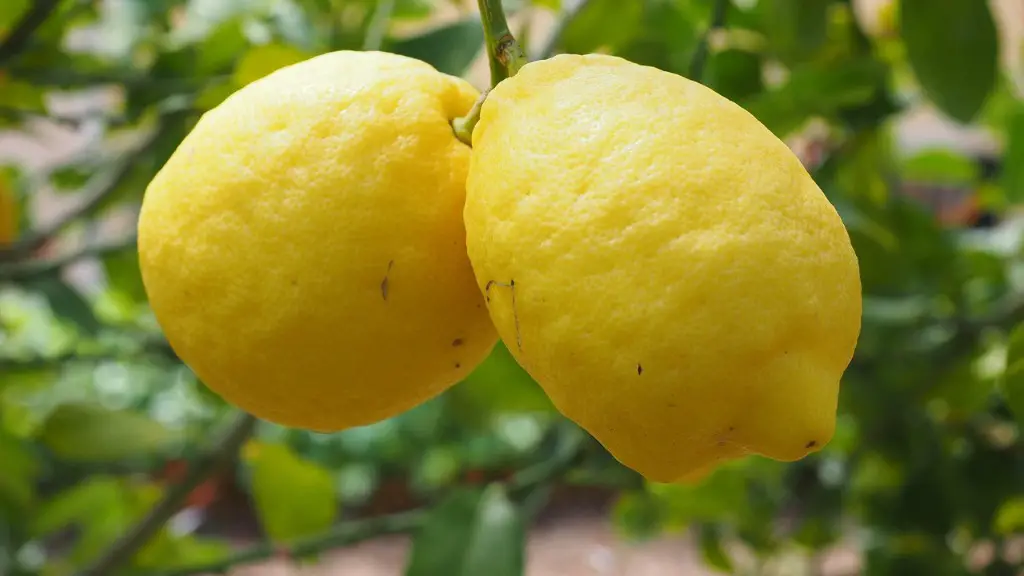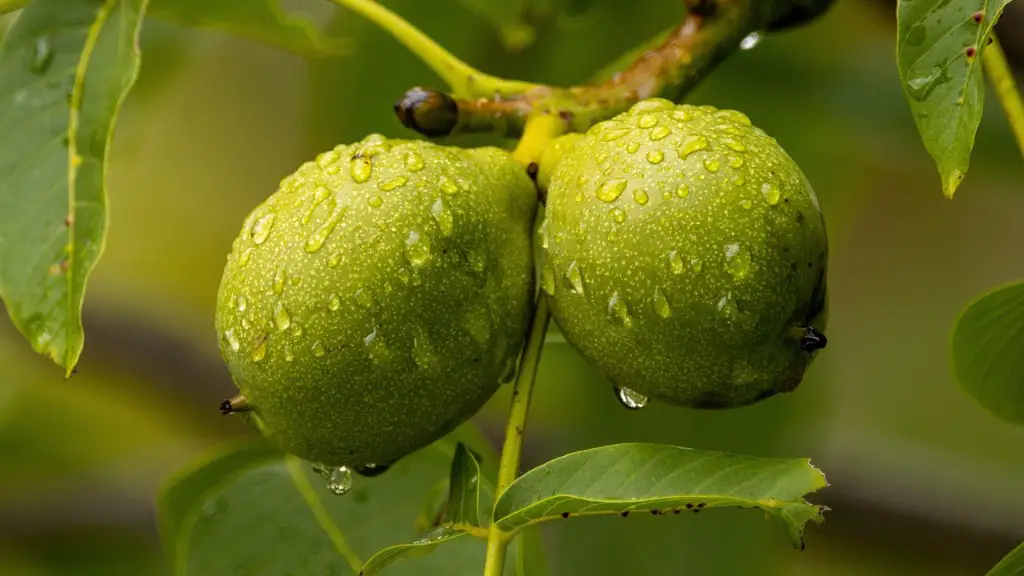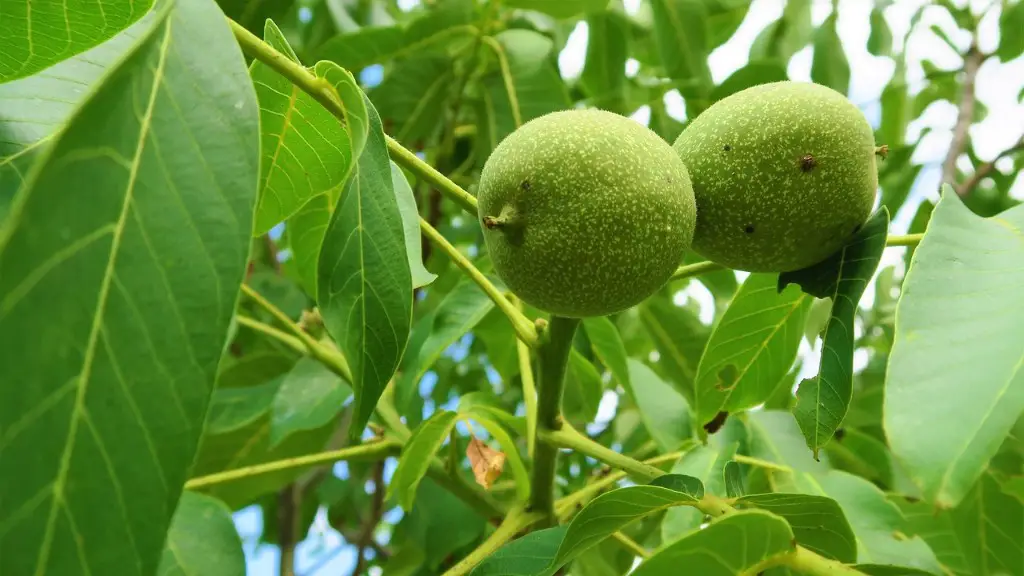A Eureka Lemon Tree is a popular type of citrus tree that is widely grown around the world by amateur and professional gardeners alike. In the United States, this tree is often found in Mediterranean climates, especially the warmer parts of California. The main appeal of the Eureka Lemon Tree is its interior juiciness and sweet flavor. But, how tall does a Eureka Lemon Tree grow?
The height of a fully-grown Eureka Lemon Tree varies greatly depending on the soil quality and environmental conditions where it is planted. Generally, the tree will grow up to 20 feet tall. In comparison, it isn’t quite as tall as other lemon tree species, such as the Lisbon Lemon Tree, which can reach up to 25 feet in height.
When it comes to pruning and caring for a Eureka Lemon Tree, it requires a moderate amount of work. Trees should be fertilised regularly, typically in the early spring and late autumn, and watered deeply twice a week throughout the summer. Additionally, branches should be regularly pruned to keep the tree nice and neat and free of overcrowding. This type of tree also requires protection from temperatures lower than 25 degrees Fahrenheit and from strong winds, which can limit its overall height.
For ideal growth, a Eureka Lemon Tree should be planted in full sun, with only minimal amounts of shade. Furthermore, the soil should be well-draining, slightly acidic and with a pH level between 6-7. Planting and caring for a Eureka Lemon Tree can offer a rewarding experience and plenty of reward when the tree starts to bear fruit.
Overall, while the Eureka Lemon Tree may not reach the same heights as other citrus varieties, it is still an excellent choice for home gardeners who want fresh lemons with a sweet flavor. With the right conditions, this tree can reach a mature height of up to 20 feet.
The Harvest From a Eureka Lemon Tree
The Eureka Lemon Tree is a reliable source of delicious fruits during the summer and fall months. The tree bears juicy, oblong lemons that are usually bright yellow in color. The trees can start producing fruits within the first three to five years, depending on the variety. With regular fertilization and watering, these trees can produce fruits for a few months every year.
Since there are multiple varieties of Eureka Lemon Trees, it’s important to know which type of tree you have planted before the harvesting season begins. Some trees can bear fruits as soon as mid-spring, while other varieties take longer, such as until late fall. Harvesting the fruits should be done with caution and with the help of a pair of gardening gloves to protect your hands from thorns, pests and diseases.
Typically, the fruits should be allowed to mature and turn yellow before they are picked. The rind of the fruit is also thicker, making it a good choice for preserving or canning the lemons for year-round use. Meanwhile the harvested fruits can be eaten immediately, used in culinary recipes or squeezed for their juice, which is a great source of nutrition and vitamins.
In summary, the Eureka Lemon Tree is an excellent choice for gardeners that want to produce juicy, flavorful fruits for its family. The tree is easy to care for and can start bearing fruits within a few years. Furthermore, the fruits that are harvested can be nicely preserved for use at a later date.
Citrus Diseases and Pests Impacting the Eureka Lemon Tree
Citrus diseases and pests can cause serious damage to a Eureka Lemon Tree and even reduce its lifespan. The most common type of disease that affects the trees is citrus greening, which is caused by the bacterium Candidatus Liberibacter asiaticus. This disease infects the leaves and shoots of the tree and causes them to yellow and fall prematurely. To prevent this disease, citrus trees should be monitored regularly and any infected parts removed as soon as possible.
Another common citrus pest is the Asian citrus psyllid, which feeds on the leaves, shoots and fruits of the tree. These insects can cause the leaves to curl and yellow, as well as reduce the tree’s yield significantly. To control for Asian citrus psyllids, the trees should be monitored for any signs of the insects and treated with an appropriate pesticide. Additionally, removing other plant debris near the tree can help to limit the spread of this pest.
Furthermore, citrus trees can attract a few other insects, such as aphids, ants and whiteflies. To keep these insects at bay, the trees should be regularly treated with a pesticide and the surrounding area should be kept clean and free from unnecessary plant debris. Additionally, providing the trees with the right amount of water and fertiliser can help to keep them healthy and free from pests and diseases.
In conclusion, although the Eureka Lemon Tree is relatively easy to care for and maintain, it is important to be aware of the various pests and diseases that can affect this tree. With the right preventive measures and a timely response to any signs of infestations, a Eureka Lemon Tree can remain healthy and productive for many years.
Lemon Fruits From the Eureka Lemon Tree
The Eureka Lemon Tree produces fruits with a bright yellow rind and flesh, and an aromatic fragrance. The juice of the fruits is also rich in citric acid, as well as full of flavor. Lemons, in general, are great sources of vitamin C and can be used in a variety of culinary recipes, such as salad dressings, marinades and desserts. They can also be used to create refreshing or hot beverages, such as lemonade or tea, as well as to make sauces, condiments and syrups.
In terms of health benefits, lemons are an excellent source of antioxidants, as well as dietary fibre, which can aid digestion. Lemons also contain a range of vitamins, minerals and electrolytes, which can be beneficial for immunity, energy levels and overall wellbeing. Additionally, lemons can help to improve the skin and hair, reduce inflammation and increase blood circulation.
Overall, the fruits from a Eureka Lemon Tree offer an abundance of nutrition and flavor. Harvesting and eating the fruits can bring many health benefits, as well as add a wonderful flavor to countless recipes. With regular fertilisation and care, a Eureka Lemon Tree can continue to produce fruits for many years.
Planting and Growing a Eureka Lemon Tree
Planting and growing a Eureka Lemon Tree is relatively easy and can provide a large harvest of delicious fruits every year. First, the tree should be planted in a sunny and well-drained location. Soil that is slightly acidic and has a pH level between 6-7 is most ideal for this type of tree. Tilling and composting the soil and adding a rootstock to ensure the tree takes to the area are also helpful.
Once the tree is planted, it needs regular watering and care to keep it healthy and strong. Watering should be done deeply three to four times a week during the summer months, when the tree is actively growing and producing fruits. The tree will also need a moderate amount of fertiliser every spring and late autumn. Additionally, pruning should be done regularly to encourage new growth and to ensure the tree remains neat and organised.
Overall, when planting and growing a Eureka Lemon Tree, the key is to provide the tree with the right location, soil and care. With regular fertilization, watering and a bit of love, this type of lemon tree can provide many years of delicious, sweet lemons. Additionally, with the right care it can reach up to 20 feet tall and 4-6 feet in width.
Uses of the Eureka Lemon Tree
The Eureka Lemon Tree is not only a useful source of sweet fruits, but can also make for a great addition to any landscape. Its fragrant blossoms and juicy fruits can attract a variety of birds and beneficial insects, such as bees and butterflies, to the garden. Furthermore, the leaves of the tree are evergreen, providing the surrounding area with a year-round aesthetic.
Additionally, the Eureka Lemon Tree can be used in the garden in its own right or can be planted as part of a citrus grove with other lemon varieties. The fruits of the tree can also be used in a range of culinary recipes, as well as tea, jelly, marmalade and baked goods. The tree can even be used medicinally, as the juice of the lemons has antibacterial and antiviral properties.
In short, the Eureka Lemon Tree has a wide range of uses, making it a great choice for gardeners of all levels. The tree can produce an abundance of delicious lemons throughout the year, as well as beautify any landscape. Furthermore, the lemons can be used in a variety of recipes and even medicinally.




